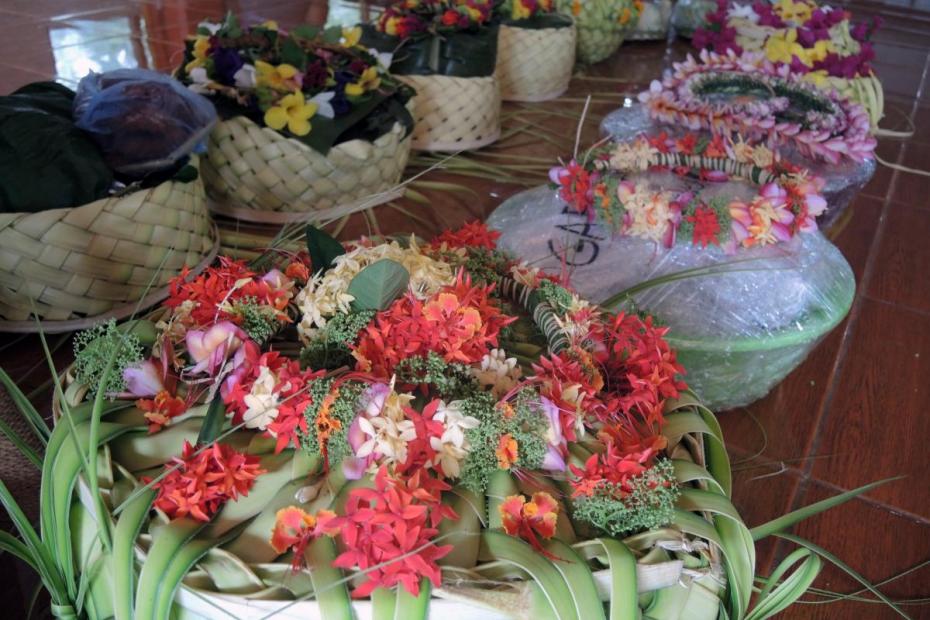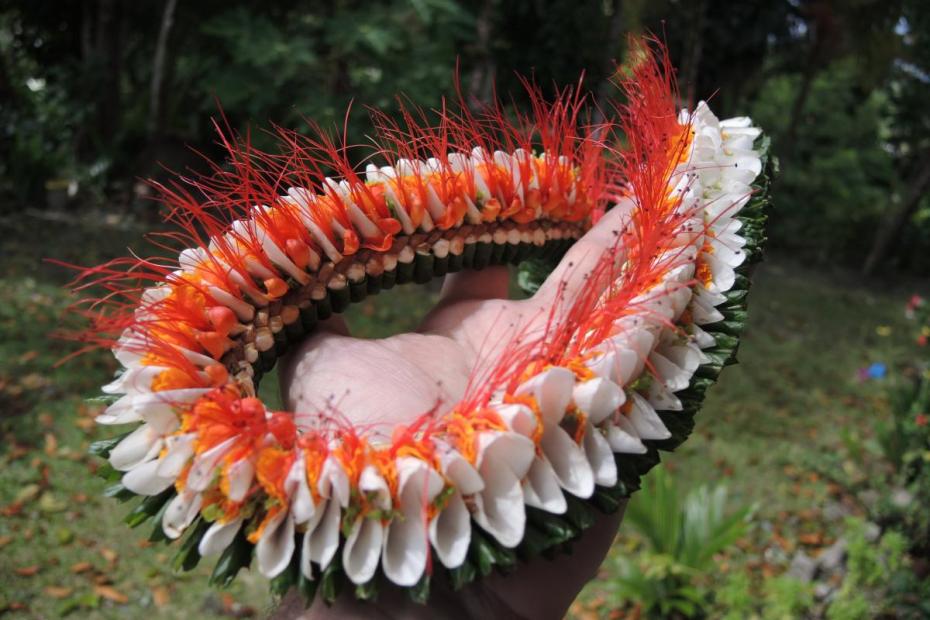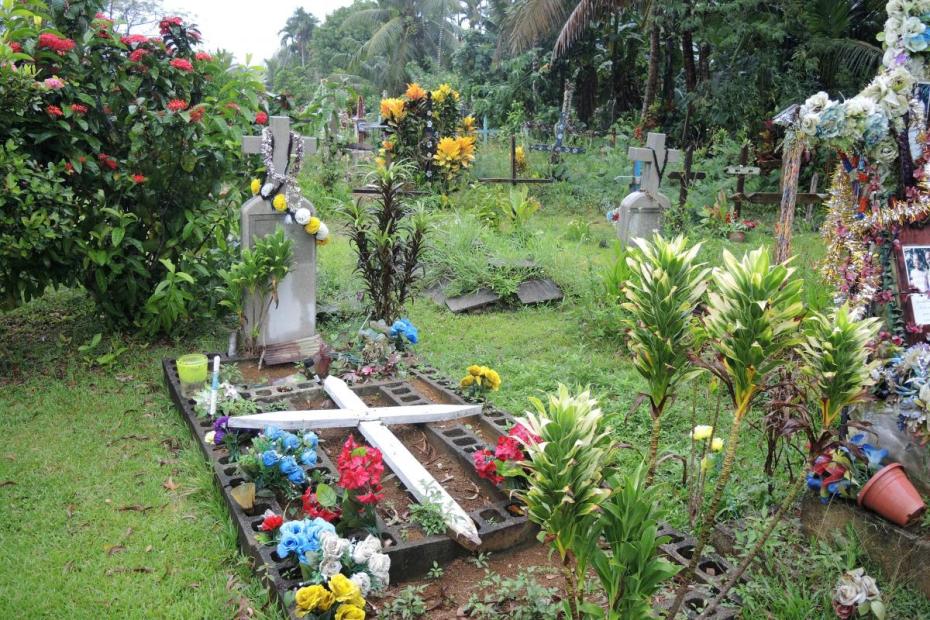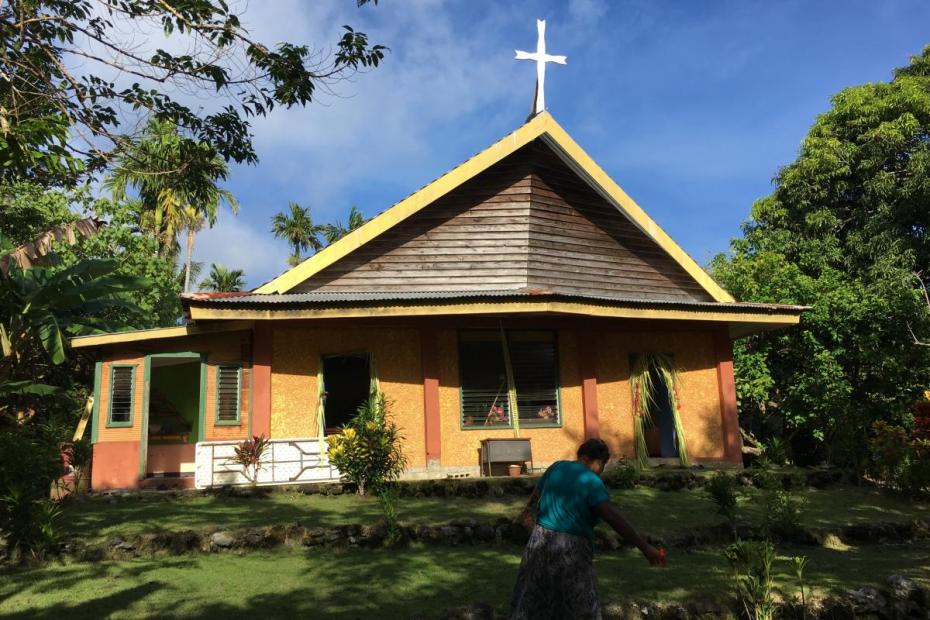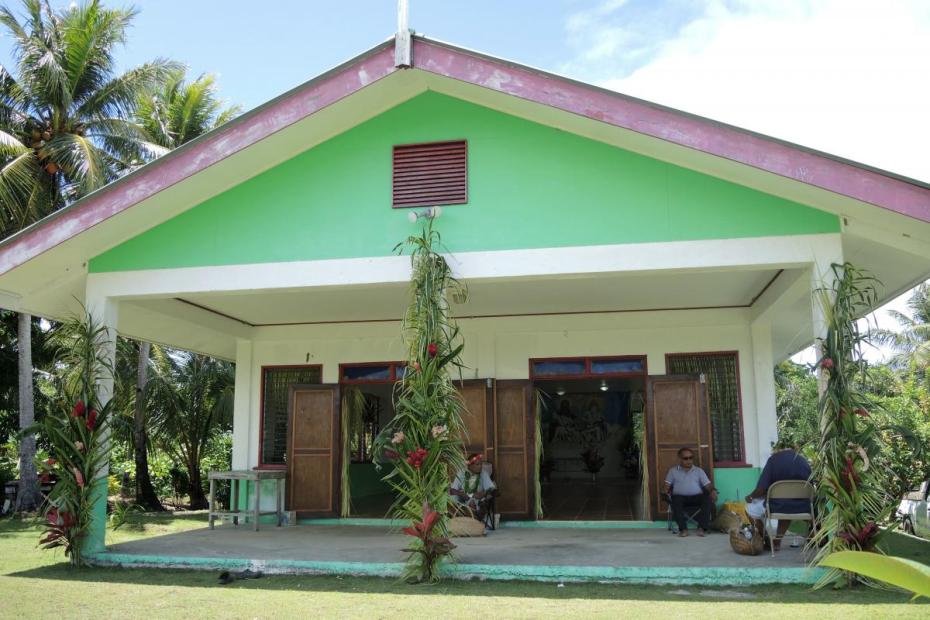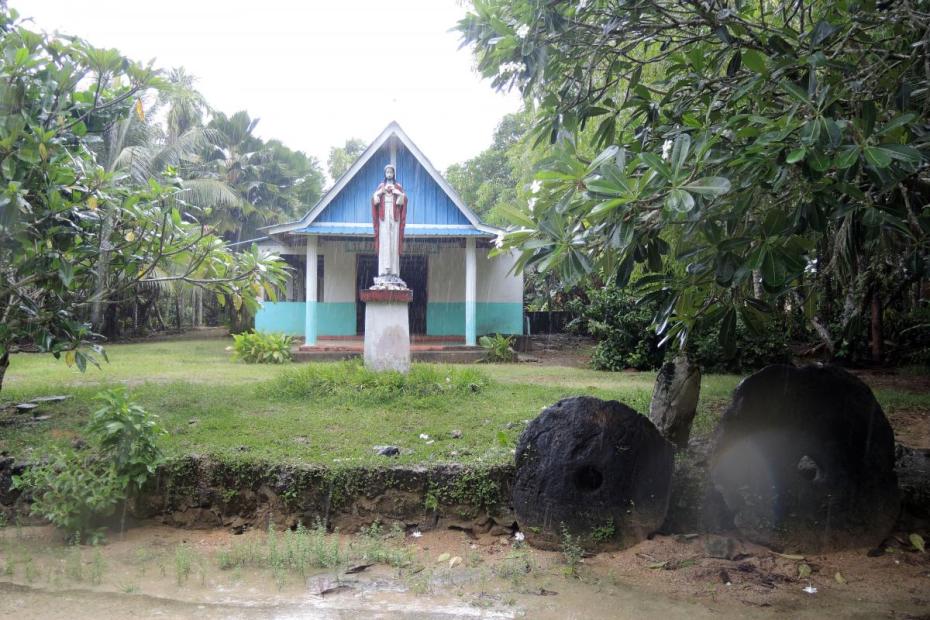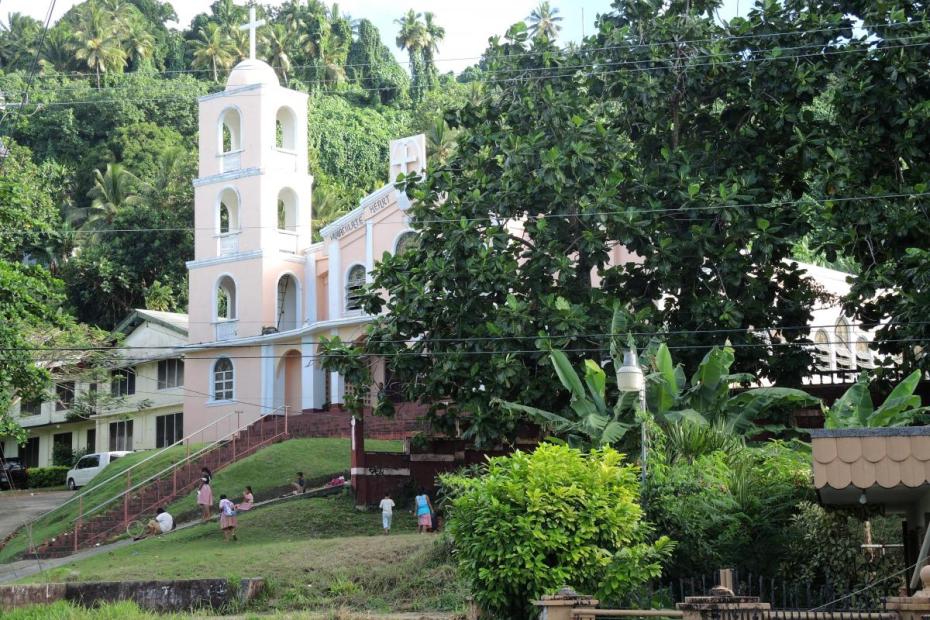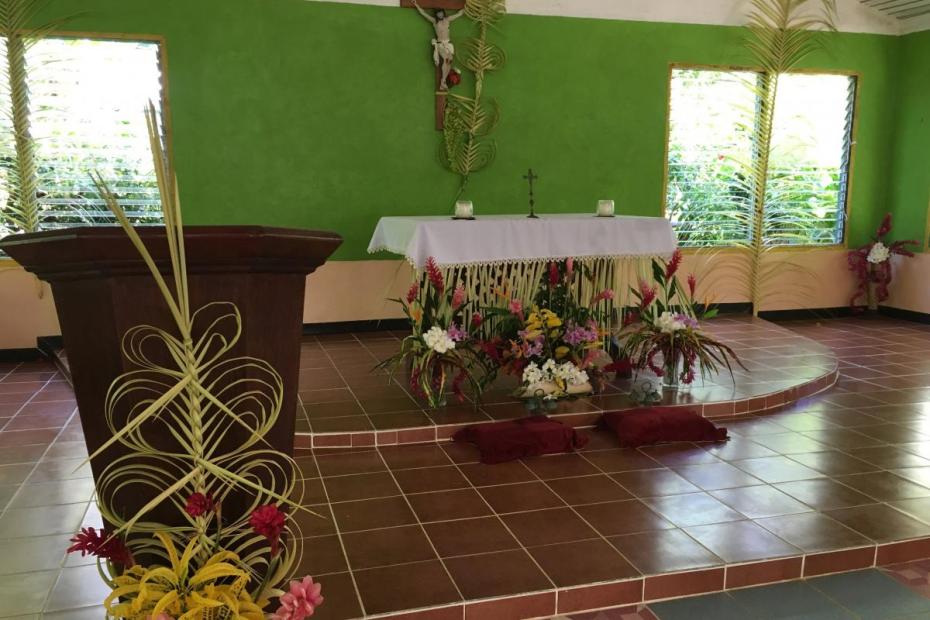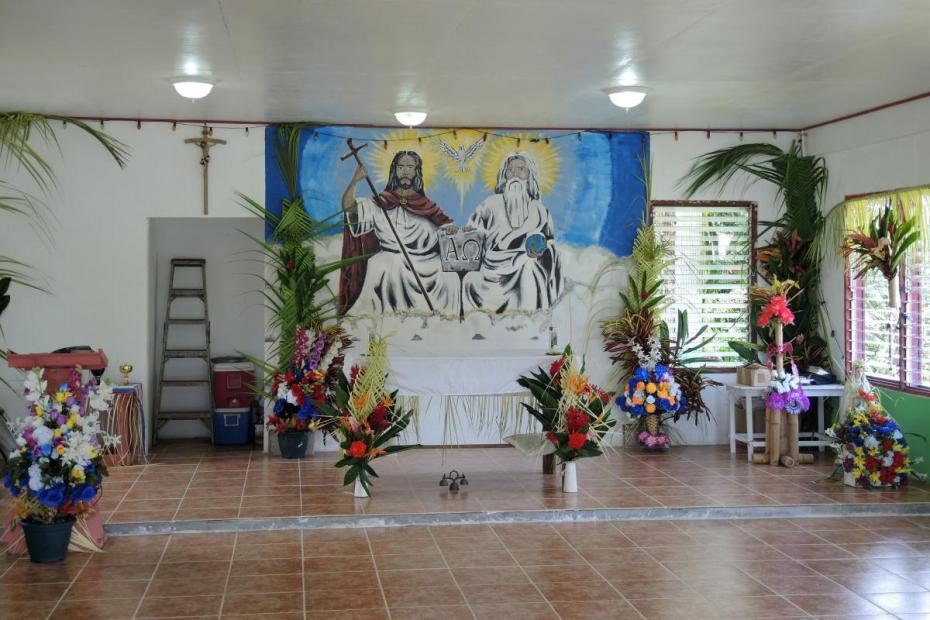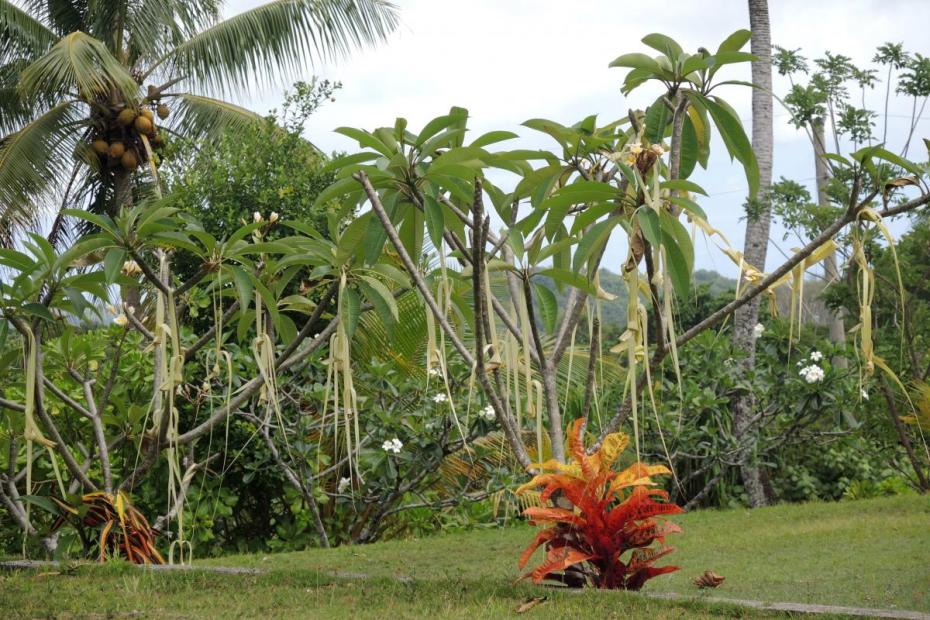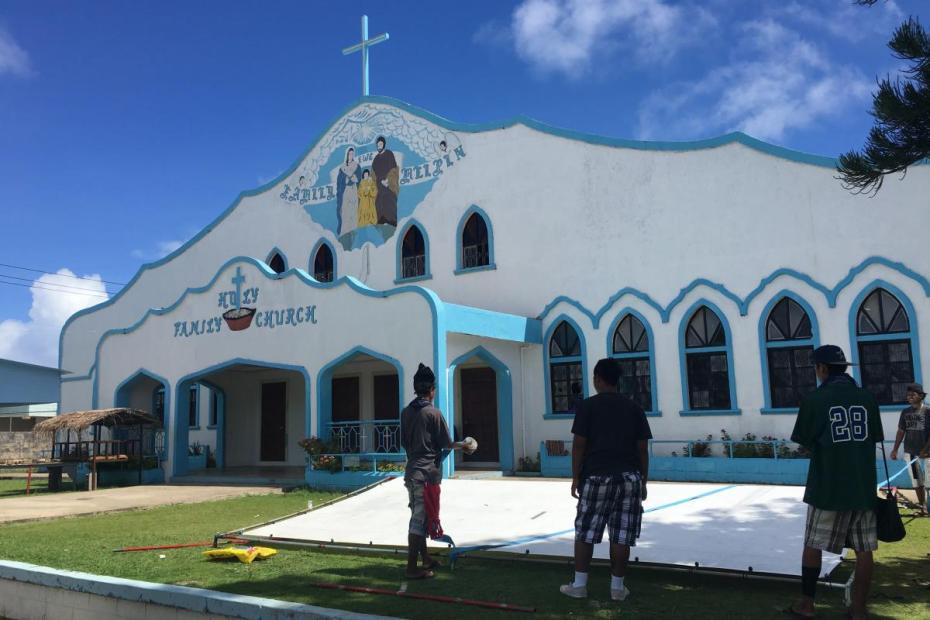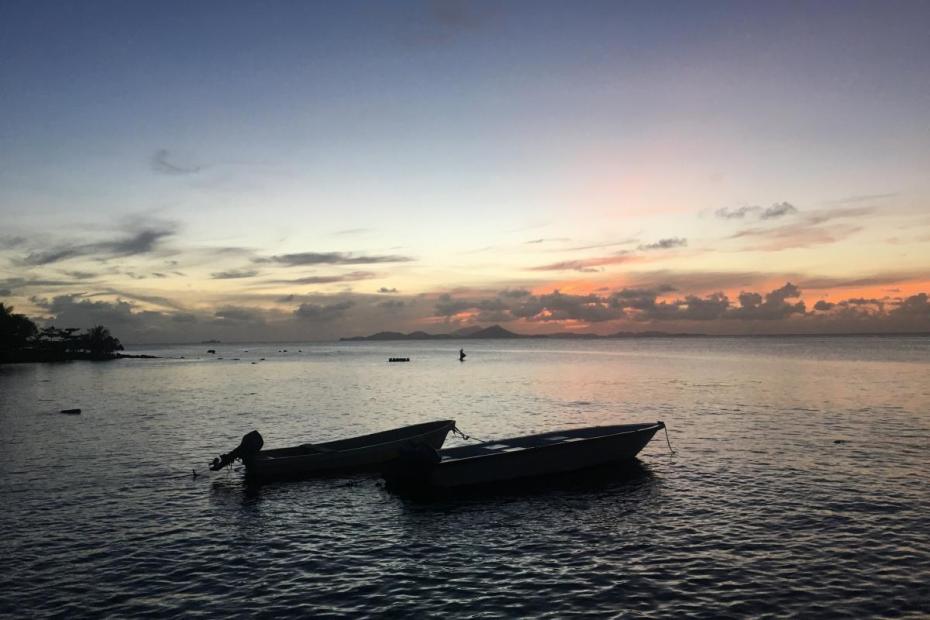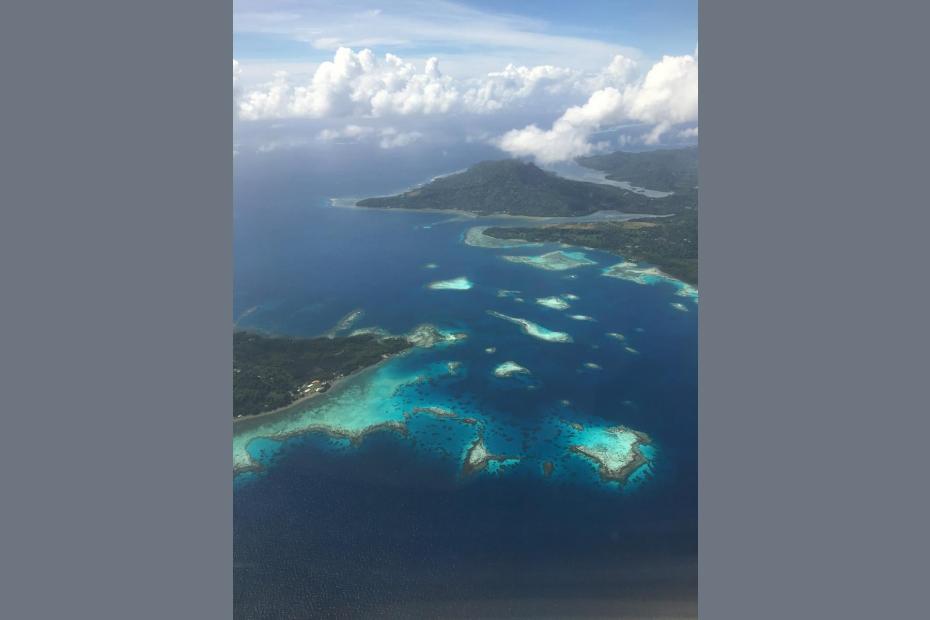Given the resources available locally, and the legacies of storms and war that have destroyed almost any building that is not of recent vintage, churches in Micronesia tend to be relatively modest structures, though they are certainly cared for. The first westerners to encounter the islands were puzzled to not find significant temples.1
Some Chuukese homes we visited had simple religious pictures, but religious practice seemed less dependent on material objects as a aid to religious devotion than in many other cultures. On the Chuukese Outer islands of Pulap, though, Juliana Flinn noted the degree to which beauty in objects and ritual, from the many statues of Mary in homes, to flowers, cloth, uniforms and hymns, are important to people.2
What is arguably most beautiful in Yapese and Chuukese Catholic aesthetics—gorgeous flower leis, or a dance, or a song—is ephemeral. What one scholar said of Micronesian artistic endeavors seems true of the visual culture of Micronesian Catholicism: “Many Micronesian artistic endeavors are transitory; their emphasis is on the perfection of the performance rather than the creation of the lasting object.”3 The humid, tropical environment, and sometime brutal typhoons have a habit of undoing the built environment quickly. Micronesian religious culture recognizes that reality about the world.
- 1Jay D. Dobbin, Summoning the Powers Beyond: Traditional Religions in Micronesia (Honolulu: University of Hawaiʻi Press, 2011), 216.
- 2Juliana Flinn, Mary, the Devil, and Taro: Catholicism and Women's Work in a Micronesian Society (Honolulu: University of Hawai'i Press, 2010), 141, 149-155.
- 3Karen Nero, “Missed Opportunities: American Anthropological Studies of Micronesian Arts” in American Anthropology in Micronesia: an Assessment, eds. R. Kiste and M. Marshall (Honolulu: University of Hawai'i Press, 1999) 257.
